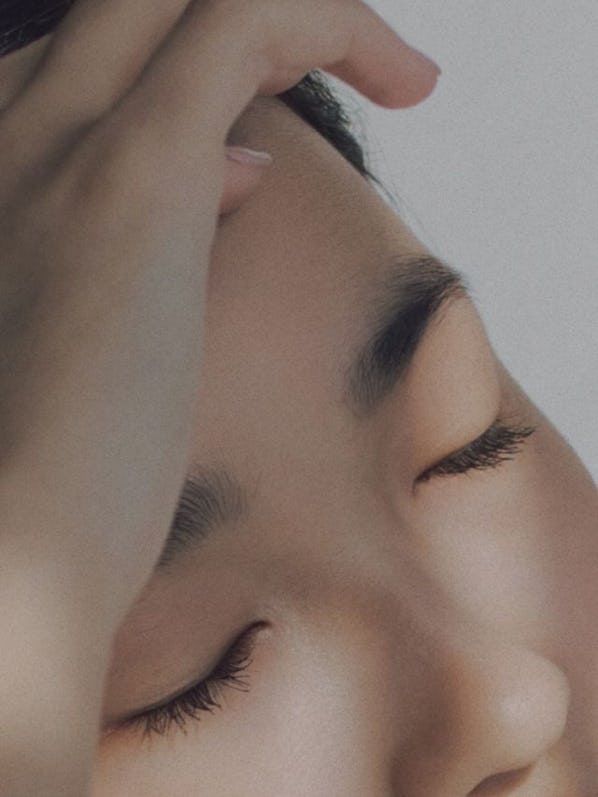
AGE-RELATED MACULAR DEGENERATION - What You Need to Know

What's In Our Essential Eye Vitamins
Glaucoma is the name given to a group of eye conditions that cause sight loss because of damage to the optic nerve – the nerve that connects the eyes to the brain. Around 80 million people live with glaucoma, making it the second leading cause of blindness worldwide.
Damage to the optic nerve can’t be reversed. Glaucoma damage can be prevented if detected and treated early. However, any sight loss is irreversible. There are different types of glaucoma, and increased eye pressure and age are important risk factors.

Glaucoma is a group of eye conditions that can cause damage to the optic nerve and vision loss. While the exact cause of glaucoma is not fully understood, it is often associated with high intraocular pressure (IOP), the pressure within the eye.
The eye produces a clear fluid called aqueous humour, which circulates through the eye and nourishes the tissues. Usually, the fluid flows out of the eye through a drainage system. In people with glaucoma, the drainage system becomes blocked or does not function properly, which causes the fluid to build up in the eye and increase the IOP. This increased pressure can damage the optic nerve, which transmits visual signals from the eye to the brain.

Glaucoma can cause a gradual loss of peripheral vision, also known as tunnel vision. This symptom can make it difficult to see objects on either side, above or below the central field of vision.
Glaucoma can cause blurred vision, making it difficult to read, drive or recognise faces.
People with glaucoma may see halos or rings and rainbow-coloured circles around bright lights, such as streetlights or headlights.
Some types of glaucoma can cause eye pain, which can be sharp or dull and may be accompanied by a headache (and sometimes nausea).
The eye may appear red, especially in acute angle-closure glaucoma, which can cause sudden eye pain and redness.
People with glaucoma may have difficulty adjusting to the darkness, making it challenging to navigate dimly lit areas.
People with glaucoma may experience eye fatigue, which can cause the eyes to feel tired or heavy, especially after extended periods of reading, driving, or watching television.
People with some forms of glaucoma, such as congenital glaucoma, may have changes in the colour of their eyes.
People with acute angle-closure glaucoma may experience nausea, vomiting, eye pain, redness, and blurry vision.
Glaucoma can make it difficult to distinguish between objects with similar colours or low contrast, such as dark grey on black or light grey on white.


Glaucoma is usually diagnosed during regular eye tests. Tests for glaucoma often start with an eye pressure test. An optometrist will also examine the front part of the eye to see whether they can spot any issues with fluid drainage, such as a blockage.
Visual field tests are also carried out to see whether there’s any loss of peripheral vision, and the optic nerve will be assessed too. This sometimes involves eye drops or an eye scan so the optometrist can look closely at the eye.
Patients with suspected glaucoma will be referred to a specialist to confirm the diagnosis and assess the level of damage.

This is the most common form. It happens when the eye’s drainage channels gradually become clogged and tends to develop slowly over many years. It’s also the type most associated with old age. It is also slightly more common in people of African-Caribbean descent.
When your eye pressure rises suddenly, this can lead to acute damage to the optic nerve. It’s much less common than primary open-angle glaucoma and tends to affect people of East Asian origin more. (Also known as closed-angle glaucoma.)
Occurs due to something else in the body or eyes, such as side-effect from certain medications, another underlying eye condition like uveitis (inflammation of the eye), or an eye injury.
This is diagnosed despite eye pressure being normal. Why it happens isn’t entirely clear, but some people’s optic nerves may be more fragile.
Also known as childhood glaucoma, is when the condition is present from birth due to an abnormality within the eye.
People with Glaucoma or other eye conditions should consult their eye specialist before flying, as changes in cabin pressure may affect intraocular pressure. This change in pressure might potentially cause discomfort or, in rare cases, temporarily exacerbate the condition.
Your doctor can provide personalised advice and recommend any necessary precautions or medications to ensure your comfort during your flight. Additionally, carry all essential eye medications and supplies with you during your travels, as this will help you maintain your eye health routine and manage any symptoms that may arise.

There is currently no cure for Glaucoma, but the condition can often be managed, and the progression of the disease can be slowed down or stopped with early detection and treatment. Glaucoma treatment aims to reduce intraocular pressure (IOP), the main risk factor for the disease.
While treatment can often help manage Glaucoma and prevent further vision loss, it cannot reverse the damage that has already occurred to the optic nerve. This is why early detection and treatment are crucial for preventing vision loss from Glaucoma.
It’s also important to note that the effectiveness of treatment varies from person to person, and regular follow-up appointments with an eye doctor are necessary to monitor the progression of the disease and make adjustments to treatment if necessary.

Marijuana has been known to lower intraocular pressure (IOP), the main risk factor for Glaucoma. Some early studies in the 1970s suggested that smoking marijuana could help reduce IOP in people with Glaucoma. However, more recent studies have found that the effects of marijuana on IOP are short-lived and not as significant as previously thought.
While marijuana can temporarily relieve glaucoma symptoms, it is not an effective long-term treatment. This is because the effects of marijuana on IOP are unpredictable, and smoking marijuana can cause other harmful side effects, such as red eyes, dry mouth, and impaired vision. Additionally, marijuana use can adversely affect the cardiovascular and respiratory systems. It can have cognitive and behavioural effects on some people. More effective and safer treatments are available for Glaucoma - see the section above.

The frequency of eye exams for Glaucoma depends on age, risk factors, and overall eye health. If you have known risk factors for Glaucoma (see the section above), you may need more frequent exams. Here are some general guidelines:

Prescription eye drops are often the first line of treatment for Glaucoma. These drops can help lower intraocular pressure (IOP) by reducing aqueous humour production or increasing its outflow. Several types of eye drops are available, including prostaglandin analogs, beta-blockers, alpha-adrenergic agonists, and carbonic anhydrase inhibitors. Eye drops are typically used once or twice a day and must be used consistently to maintain effectiveness.
In some cases, oral medications may be prescribed to help lower intraocular pressure (IOP). These medications are usually used when eye drops are ineffective or cause side effects. Common oral medications used for Glaucoma include carbonic anhydrase inhibitors and beta-blockers.
Laser trabeculoplasty can help open the drainage system and lower intraocular pressure (IOP). This treatment is usually used when eye drops are ineffective or cause side effects. The treatment involves using a laser to make small, painless openings in the drainage system to help reduce IOP. There are two main types of laser trabeculoplasty: argon laser trabeculoplasty (ALT) and selective laser trabeculoplasty (SLT).
Surgery is typically considered a last resort and is only used when other treatments are ineffective or cause side effects. If other treatments are ineffective, surgery may be recommended to lower IOP. There are several types of surgery for Glaucoma, including trabeculectomy, which creates a new drainage channel for aqueous humour, and tube shunt surgery, which places a small tube in the eye to help drain fluid.